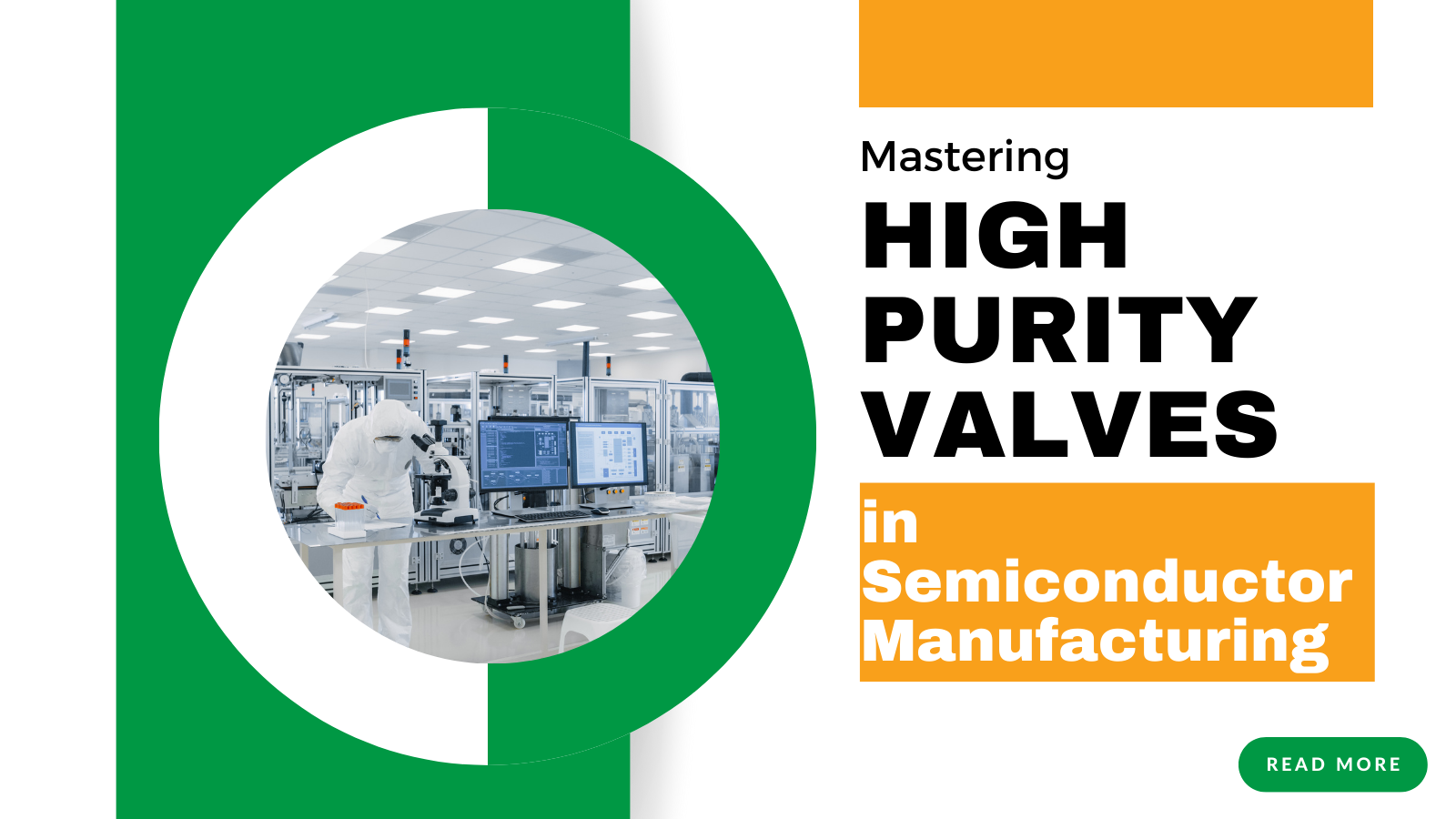Mastering High Purity Valves in Semiconductor Manufacturing

In the intricate world of semiconductor manufacturing, precision and purity are paramount. It's a domain where even the smallest impurity can disrupt the delicate processes that give birth to the chips powering our modern devices. High purity valves, designed to meet the stringent requirements of this industry, are the focus of our exploration in this article.
The Role of Valves in Cleanroom Processes
In industries like food and beverage, cosmetics, biotechnology, pharmaceuticals, and semiconductors, valves play a crucial role. However, the level of cleanliness and purity required in these industries can vary significantly. For semiconductor manufacturing, the term "high purity" is the standard when referring to valves used in the process.
In the semiconductor industry, valves are subjected to rigorous demands, ensuring that they are free from contaminants that could compromise the purity of the products. This is crucial because even minuscule impurities can lead to defects in the semiconductor chips.
High Purity Valves in Semiconductor Manufacturing
Semiconductor manufacturing relies on ultra-pure water in its processes, and this demands valves that can meet the stringent purity requirements. Valves used in semiconductor manufacturing are typically constructed from PVDF (Polyvinylidene fluoride), a material that provides exceptional resistance to chemical corrosion and is highly compatible with ultra-pure water.
These high purity valves are predominantly used for on/off and pressure relief applications in sizes ranging from 1/2 inch to 12 inches. While some of these valves are manually operated, others may be actuated. To maintain their purity, these valves are manufactured in cleanroom environments and are double-bagged for further protection.
In operation, high purity valves are sterilized with chemicals or in a Clean-in-Place (CIP) process above 200°F, ensuring that they remain free from contaminants. The semiconductor industry also uses stainless steel for gas lines to maintain purity and prevent contamination.
Key Manufacturers of High Purity Valves
High purity valves are specialized components, and only a select group of manufacturers produce valves for the semiconductor industry. Fujikin primarily focuses on semiconductor valves, while Gemü offers products for a wide range of industries, with a significant presence in the biopharmaceutical sector. Crane Saunders and Richards Industries are also prominent players in the biopharmaceutical valve market. Waukesha Cherry Burrell specializes in valves for the food and beverage industries.
Future Trends in High Purity Valves
The semiconductor industry, like many others, is marked by continuous technological innovation. Two key trends on the horizon are expected to reshape this industry.
1. Implementation of Process Analytical Technology (PAT)
The adoption of Process Analytical Technology (PAT) is expected to revolutionize the biopharmaceutical industry, leading to a shift from batch processing to continuous processing. PAT will enable real-time monitoring and control, enhancing product quality and reducing the reliance on batch processes. This transition to continuous processing will require advanced valve technology and precise Distributed Control Systems (DCS) and Programmable Logic Controllers (PLC) for automated control and integral validation management.
2. Focus on Productivity and Cost Control
As global competition intensifies, the semiconductor industry will place greater emphasis on productivity and cost control. Metrics such as throughput, process availability, waste reduction, and utility cost management will become increasingly important for measuring operational efficiency. This trend mirrors the emphasis placed on these metrics in mature industries, signaling a more competitive and cost-conscious future for the semiconductor sector.
Markets and Conclusion
High purity valves are not limited to the semiconductor industry but are also used in the transport and treatment of incoming and outgoing water and process fluids. While they are an integral part of cleanroom processes, nearly 50% of the valve investment goes toward pumps for clean applications.
The market for cleanroom valves is expected to grow significantly. In 2007, it stood at $2.964 billion and is projected to reach approximately $3.635 billion by 2010. The largest purchasers are expected to be the biopharmaceutical and food industries, followed by the semiconductor sector. The aerospace, medical device, nanotechnology, and other related industries will also contribute to this growth.
In conclusion, high purity valves are the lifeline of the semiconductor industry, ensuring the purity and integrity of the manufacturing processes. As technology advances and competition grows, these valves will continue to evolve to meet the ever-stricter demands of the industry, driving forward the progress of semiconductor manufacturing.
